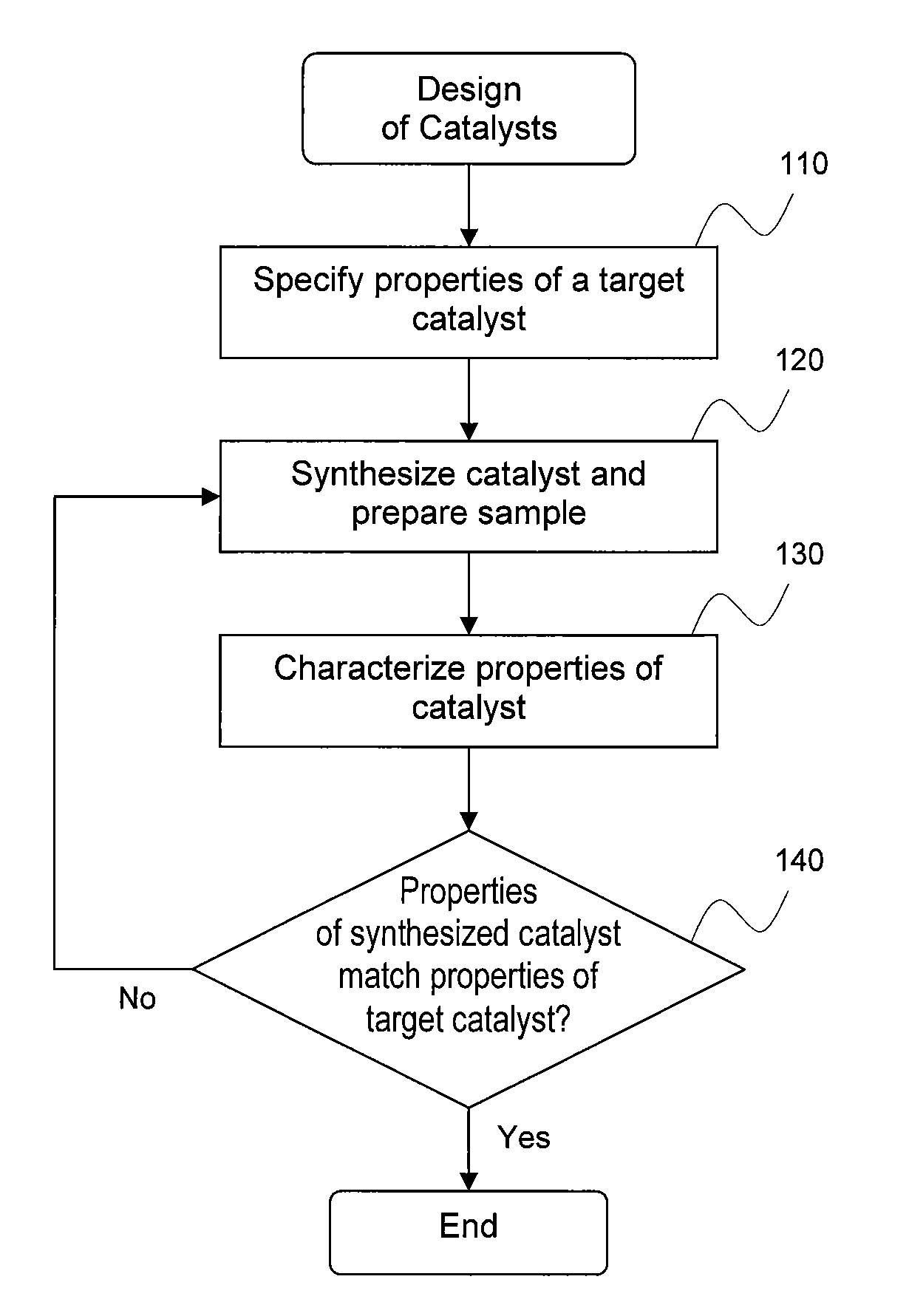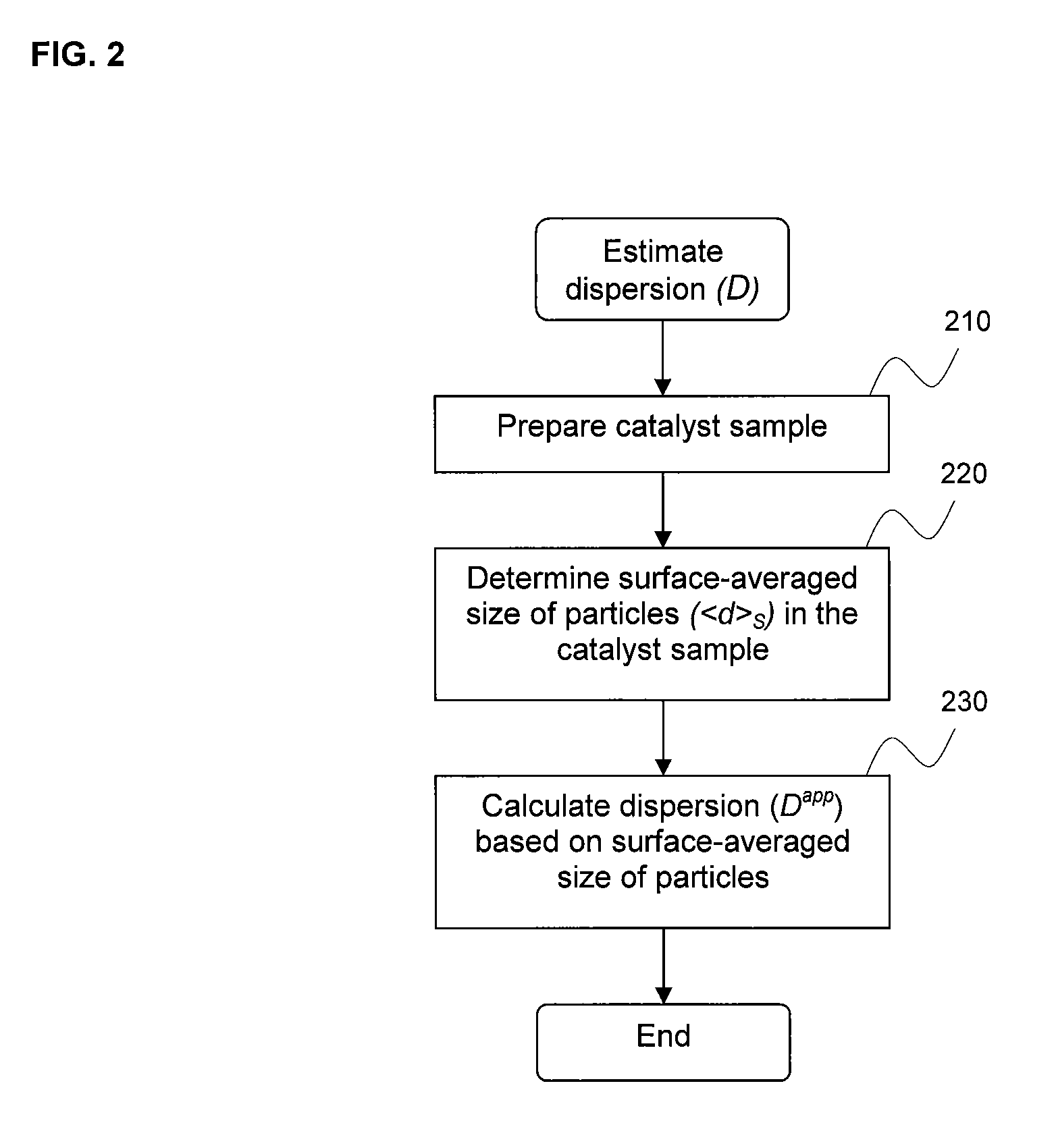Dispersion and metal particle size characterization of nanocatalysts
a nanocatalyst and metal particle technology, applied in the field of catalyst characterization, can solve the problems of deficient model, difficult to directly measure the physical and chemical properties of the catalyst, and inability to work with small metal particles, etc., and achieve the effect of reducing the difficulty of determining and applying more efficiently
- Summary
- Abstract
- Description
- Claims
- Application Information
AI Technical Summary
Benefits of technology
Problems solved by technology
Method used
Image
Examples
Embodiment Construction
[0023]FIG. 1 is a flow diagram illustrating the design process of catalysts in which embodiments of the present invention can be practiced. In step 110, the composition and the properties of a target catalyst are specified. The composition indicates the metal species and the support material. It also specifies the weight ratio of the metal species if it includes more than one metal species. The properties may include the metal particle size distribution. A catalyst with the target composition is then synthesized in step 120. In addition, a sample of the synthesized catalyst is prepared for subsequent characterization in step 130, where the properties of the catalyst sample are determined. Then, the properties of the target catalyst are compared against the properties of the synthesized catalyst in step 140. If there is a good match, the synthesized catalyst is accepted, and the process ends. If a match is not obtained within a given predetermined range of acceptable values, the proc...
PUM
| Property | Measurement | Unit |
|---|---|---|
| size | aaaaa | aaaaa |
| particle sizes | aaaaa | aaaaa |
| particle size | aaaaa | aaaaa |
Abstract
Description
Claims
Application Information
 Login to View More
Login to View More - R&D
- Intellectual Property
- Life Sciences
- Materials
- Tech Scout
- Unparalleled Data Quality
- Higher Quality Content
- 60% Fewer Hallucinations
Browse by: Latest US Patents, China's latest patents, Technical Efficacy Thesaurus, Application Domain, Technology Topic, Popular Technical Reports.
© 2025 PatSnap. All rights reserved.Legal|Privacy policy|Modern Slavery Act Transparency Statement|Sitemap|About US| Contact US: help@patsnap.com



